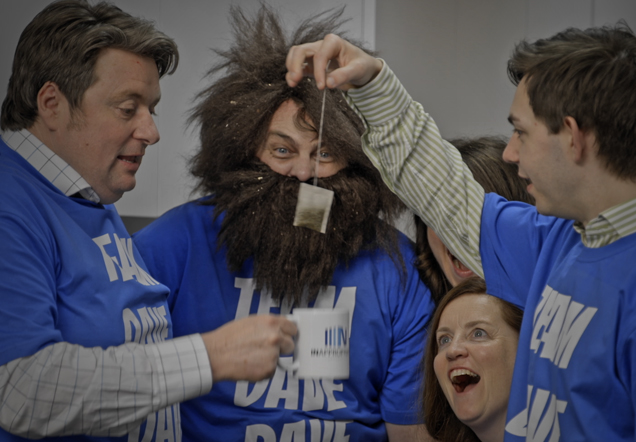The Shannon Company is an agency specialising in behavioural change, and we asked Managing Partner Ian Forsyth to share his insights into how the (Mis)behave with Dave series was developed.
Can you talk us through the creative approach?
During eight or so years with WorkSafe Victoria, I was very aware of the prevalence and challenges of mental injury in the workplace – it seemed that the whole area was one that many employers just felt uncomfortable raising or addressing.
That got us thinking about different ways of communicating around the issue. Comedy is a great way of breaking down barriers and building interest and discussion, so along with EML we thought what better than blending the right technical information and simple preventative tips, with a bit of humour?
Why do you think that humour is effective for topics which are serious?
It’s a very fine line – we’d used humour to effect some years ago when looking at prevention of physical injury, and thought why wouldn’t it also be effective in preventing mental injury? The humour could certainly never belittle or play down the seriousness of the issue, but it can break down barriers, it can give people licence to talk about a subject they probably would otherwise avoid. We steered clear of belly laugh humour, more ‘fly on the wall’ in style and perhaps just exaggerating actions that many of us may actually experience or witness on a regular basis. To be fair, there’s a little bit of “The Office” about “Inappropriate Corp” and there’s a splash of Ricky Gervais about Dave – he’s trying to be a good boss but is probably a bit out of his depth, doesn’t quite understand how others might see his actions, and needs help.
Most importantly though, we had the counsel of Dr Peter Cotton, who’s absolutely at the forefront of mental injury prevention in the workplace, and he provided great guidance as to the blending of humour with academic, facts based insights. EML were also able to provide great advice given their expertise in working with injured workers to get them back to work and life.
What reaction do you hope that people have to the videos?
We hope people will stop, sit up, take notice and talk about them. And anecdotally that’s exactly what’s happened. For many people it seems the first thing they do is ask themselves, “Gee, is humour really appropriate for this topic?” and pleasingly, to date the answer has been “Yes”.
There’s no doubt going down this path was a bold and brave step by EML, and perhaps knowing Peter Cotton’s eagle eye was with us all the way, they gave us a great amount of creative freedom!
The easiest thing for them would have been to put out a series of very serious, very safe, very straight facts and figures based videos, and just be seen to be doing something about addressing mental wellbeing in the workplace. That approach wouldn’t ruffle any feathers, but would also pass like a ship in the night and gather dust on the shelf.
I hope the key reaction is that we all deep down realise that maybe, just maybe, there’s a little bit of Dave in all of us, and seeing it exaggerated in Dave prompts us to think more about what we do and how we treat our colleagues, our workers and even our bosses.
How were the topics developed?
The whole project was a collaborative effort and we worked closely with Dr Cotton and EML to identify the topics that we all felt were both relevant and where we could make a difference.
Bullying was certainly the most challenging of topics, but one we couldn’t not address – it would’ve been the elephant in the room. For me, given my WorkSafe experience, another key topic had to be “Civility verses Incivility”. It’s very clear that in many cases of workplace mental injury, what starts out as a relatively ‘minor’ thing or behaviour can escalate overtime, leading to major and damaging outcomes, like the consequences of bullying. It’s pretty simple, treating people how we would expect to be treated ourselves. Everything else sort of starts from there!

